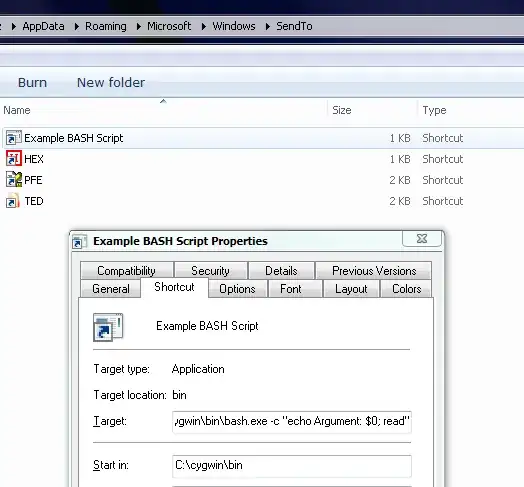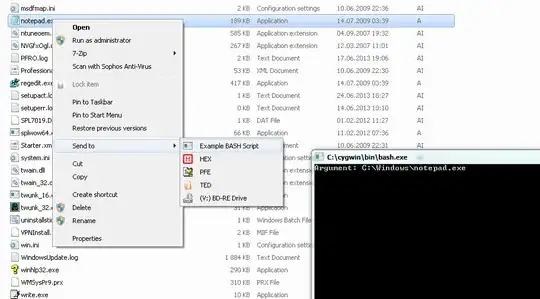I would like to use a bash shell script from the SendTo folder. When I put a shortcut to a batch or exe into theSendTo folder it shows up in the shell Send To context submenu, but when the shortcut is pointing at a shell script it doesn't.
The OS I'm testing this on is Win7 Home Premium SP1. The extension is .sh which has been associated with MinGW's bash.exe.
My shell script has a .sh extension and I've tried disassociated the .sh extension (I think that MinGW set it up initially, but that didn't work) using this utility and tried to reassociate it to bash using:
ftype ShellScript=c:\MinGW\msys\1.0\bin\bash.exe -c "'%1' %2"
assoc .sh=ShellScript
in an admin cmd shell. Though this works at a command prompt and the Explorer shell (via double click), it won't show up in the Send To menu and it won't accept a parameter by dragging a file on top of the script directly.
Does anyone know how I would do this?

